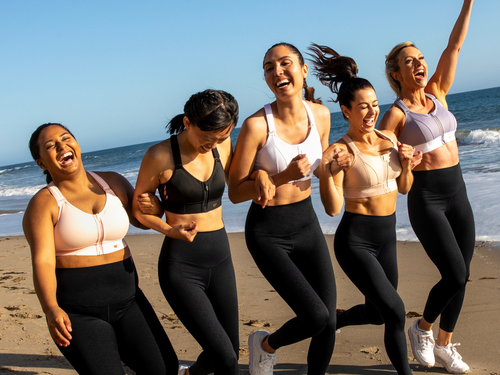
Before you’re on bedrest and baby duty, it’s important to consider a basic workout routine. Studies show that not only does exercise have no connection to miscarriage, but it can help make pregnancy and labor easier, helps lower the chances that the mother will be diagnosed with diabetes, plus quickens post-partum results.
While seasoned exercisers will need to tone down the intensity and newbies will need to start slow, there is no excuse for skipping the squats. Doctors recommend that pregnant women get 30 minutes of exercise every day. Here are seven things you should know about exercising during and after pregnancy.
Exercise lifts your mood
Ask any mom, pregnancy can wreak havoc on your moods. To improve and level out your mood, exercise is key, as it releases dopamine – or “feel good” chemicals – in your brain. The endorphins that are pumping after your jog promote all kinds of neural changes including new activity patterns that help you remain calm and happy. Working out can also act as a distraction and help avoid depression and anxiety. Your little one can feel it when you stress, so give them a break before they enter the world.
Not everyone will have the same routine
The frequency and intensity of your workout depends on your current fitness level. If working out has never really been your thing, start out slow with stretches and brisk walks. Schedule your workout at regular times and maybe find a workout buddy to keep yourself accountable and motivated. For seasoned exercisers, focus on maintaining fitness rather than making gains.
Running is 100 percent encouraged
For runners, it is completely safe to run up until labor and even recommended by doctors. In fact, a woman gave birth immediately after running a marathon. It’s an extreme example (and not recommended by us) that shows runners they don’t have to give up what they love. Keeping a steady running regimen will also help women ease back into post-partum exercise and lessen the chances of injury.
Prevents back pain
Your posture is everything when it comes to holding up that watermelon, and exercise is the cure. Light walks, stretches, weight training and ab exercises can help improve your back strength, which leads to better posture.
Makes labor “easier”
Incorporating exercise before the big day can make delivery move a lot quicker and smoother. It ups your endurance and pushing becomes a less exhausting process. A recent study found that 38 percent of women who did not exercise had a prolonged second stage of labor (lasting more than an hour) compared to women who participated in regular exercise.
Focus on abs
You may think that there is no point to ab exercises at this point; a flat stomach is not happening. Abdominal exercises will strengthen your core, which is crucial during pregnancy. It allows less stress to be put on the spine, and again, the worked muscles make the pushing process easier. Also, strong abdominal muscles means your post-partum belly will bounce back quicker. Avert from ab exercises that have you lie on your back after the first trimester to avoid feeling dizzy, nauseous and breathless.
Exercise has no effect on breastmilk
There has actually been no evidence to conclude that exercise diminishes the nutrients in your breastmilk or the amount of breastmilk you produce.
Based on this research, there is absolutely no negatives to moderate exercise during pregnancy. In fact, the positives of prenatal exercise are enough to either continue or start a workout routine. Do it for your baby. Do it for you.



























